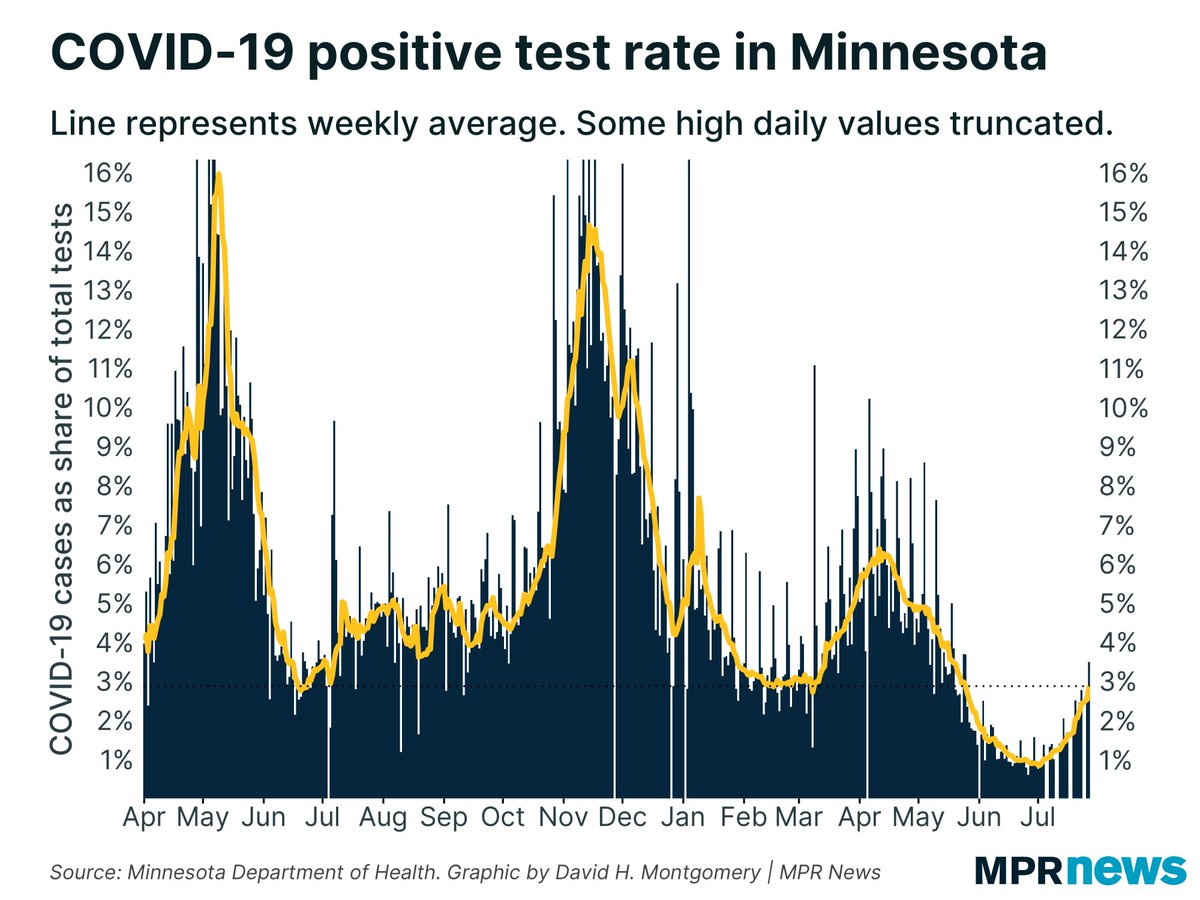
Today is a Tuesday, which means @mnhealth is reporting 3 days of data today. So don’t freak out over the 1,032 new cases reported today.
Cases ARE rising, which is bad, but more modestly. Over the past week we’re averaging 350 cases per day, up from 220 cases per day last Tues.
Cases ARE rising, which is bad, but more modestly. Over the past week we’re averaging 350 cases per day, up from 220 cases per day last Tues.

@mnhealth MN’s positivity rate is up to 2.87% — until quite recently, record-low territory — from 2.0% a week ago. 

@mnhealth Here’s how this current #COVID19 wave compares to past waves. The next few days could be key in showing whether we’re about to shift into another gear or not. 

@mnhealth Here’s the big picture: while cases are up over the past month in MN, we’re not even in the same ballpark as the states being ravaged by delta right now.
YET?
YET?

@mnhealth You can see the current #COVID19 case growth is focused in the South & California.
You might be tempted to say it’s seasonal, but it’s not exactly been chilly in the Midwest lately…
Whenever any area seems to be escaping COVID, always wait a few weeks before claiming victory.
You might be tempted to say it’s seasonal, but it’s not exactly been chilly in the Midwest lately…
Whenever any area seems to be escaping COVID, always wait a few weeks before claiming victory.

@mnhealth Cases are rising most strongly in the Twin Cities metro and east-central Minnesota, especially when you adjust for vaccination rates. 

@mnhealth Welp, gotta go recalibrate the truncation on this graph… 

@mnhealth Confirmed cases are up in all age groups, but especially among working-age adults.
Cases are NOT surging among children too young to be vaccinated (at least, not *confirmed* cases).

Cases are NOT surging among children too young to be vaccinated (at least, not *confirmed* cases).


@mnhealth Vaccination rates are starting to inch back up, likely as fears of the new wave spur the hesitant to go get jabbed. 

• • •
Missing some Tweet in this thread? You can try to
force a refresh













